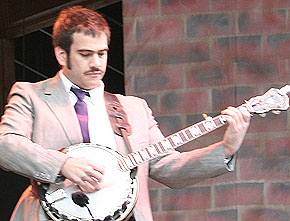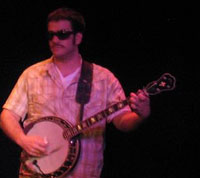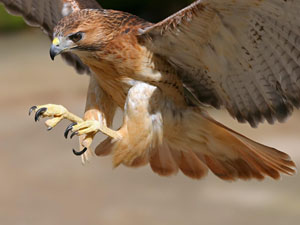December 31, 2009
2009 Highlight: Pikelny Upstages Fleck With Highly Innovative Facial Hair
Moustache solo in C major dazzles Telluride

Despite countless technical achievements, the problem of how to make progressive banjo playing less earnest and more ironic had thwarted banjoists for years.
TELLURIDE, CO — As progressive banjo players continued their race towards the most innovative style, one picker’s achievement stood alone this year as the most significant artistic and musical advance in all of banjo playing.
Scholars agree that Noam Pikelny’s performance at the 2009 Telluride Bluegrass Festival marked a milestone in modern banjo and established a new paradigm for artistic innovation in acoustic music.
During Punch Brothers’ highly anticipated “Play and Sing Bluegrass” set, Pikelny played flawlessly in a variety of styles but did so with long sideburns and a highly ironic moustache styled after many well-known players’ of the 1970’s.
Critics and fans immediately agreed that Pikelny’s facial hair constituted a breakthrough tour-de-force in musical sarcasm.
For the past ten years, banjo players have struggled with how to achieve 21st century “superirony” through progressive banjo playing.
Despite countless advances affecting fingerings, tunings, tone, amplification, and harmony, the problem of how to make progressive banjo playing less earnest and more sardonic has repeatedly thwarted banjoists.
“I don’t get it. You’d think these guys were working on Sputnik or something,” said M. Murray, a rock music fan.
Indeed, banjo players have historically sought technical solutions to musical problems, an approach which worked well for most of the last century.
Luminaries such as Earl Scruggs, Don Reno, Bill Keith, and Bela Fleck all founded influential music careers on their development of pioneering new techniques.
“Those days are over. Novelty is no longer quite such an important force behind major musical achievements,” said Dr. Sherwood Harman, a pop musicologist.
“As Lady Gaga, Justin Timberlake, Usher, the Arctic Monkeys, Britney Spears, OutKast, the White Stripes, and countless indie bands have demonstrated: the greatest artistic innovation of the ‘00’s has been to unapologetically borrow and recombine preexisting styles, but mix in a shit-ton of irony,” he continued.
“Do you mean like Kanye West’s space odyssey?” asked one student.
“No, actually, that was serious,” responded Dr. Harman.
On the final night of Telluride, Fleck joined Pikelny and the rest of Punch Brothers on stage at the Sheridan Opera House, and the expanded group reprised Fleck’s modern bluegrass classic “See Rock City”.

Even skeptics of progressive bluegrass acknowledged Pikelny's unique and highly effective approach.
“But instead of taking a banjo break when his turn came around, Noam just let the audience consider his moustache for like a minute-and-a-half,” recalled E. Helmers, a banjo player in the audience.
Although Fleck played a creative and engaging solo over his own composition, his playing lacked the utter freshness and originality of Pikelny’s moustache solo.
Even skeptics of progressive bluegrass acknowledged Pikelny’s totally unique and highly effective approach.
“Punch Brothers are my new favorite band,” said C. DiMario, who is uncommonly skeptical of most things.
Over the course of the concert, Pikelny brought his moustache to bear on everything from note-for-note Radiohead covers to ultra-traditional bluegrass banjo breaks.
“Noam has just brought progressive banjo playing into the new decade,” said Helmers.







check out the cover of Tasty Lick’s album “Anchored to the Shore”.
Fleck and Mark Schatz have some pretty incredible mustaches on that one.
Nice blog. I just bookmarked you on my bloglines.
Sent from my Android phone
[…] und schneller als jemals zuvor zu spielen. Und dass Banjovirtuose Noam Pikelny durch seine neue haarige Gesichtstracht einen Meilenstein im modernen Banjospiel gesetzt hat. Und dass der Vintagebanjo-Experte Curtis […]